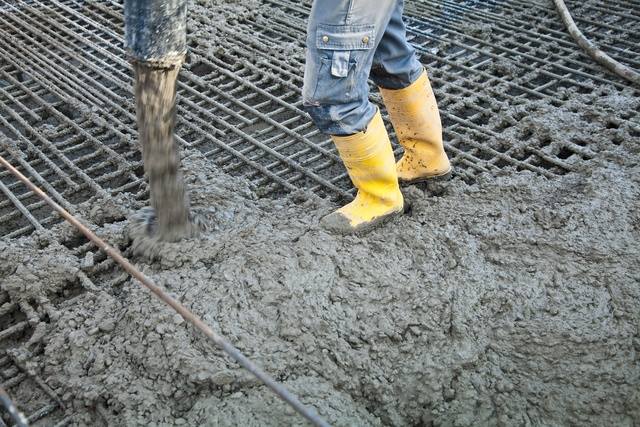Your sidewalks are more than just pathways; they contribute significantly to your home’s curb appeal and ensure the safety of your family and visitors. Unfortunately, the wear and tear of daily life, weather fluctuations, and ground shifting can lead to unsightly and potentially dangerous cracks in your concrete walkways. Addressing these cracks promptly and effectively is crucial for maintaining the integrity and aesthetics of your property. This article will explore various methods for repairing sidewalk cracks, focusing on the effective technique to add dry concrete to crack in sidewalk, and highlight the importance of professional concrete services for more complex projects.
Understanding the Causes of Sidewalk Cracks
Before diving into repair methods, it’s essential to understand the common culprits behind sidewalk cracks:
- Freeze-Thaw Cycles: Water seeps into existing cracks and expands when it freezes, exacerbating the damage. This cyclical process is particularly harsh in regions with significant temperature variations.
- Ground Movement: Shifting soil due to settling, erosion, or tree root growth can exert pressure on concrete slabs, leading to cracks.
- Heavy Loads: Repeatedly driving heavy vehicles over sidewalks or parking heavy items on them can cause structural stress and cracking.
- Age and Wear: Over time, concrete naturally weakens and becomes more susceptible to cracking, especially with exposure to the elements.
- Poor Initial Construction: Improper mixing, pouring, or curing of the concrete during the initial installation can lead to inherent weaknesses and premature cracking.
Addressing Cracks: DIY vs. Professional Concrete Services
For minor cracks, a do-it-yourself approach might suffice. However, larger, more complex cracks or structural issues necessitate the expertise of professional concrete services.
DIY Crack Repair:
- Cleaning the Crack: Begin by thoroughly cleaning the crack with a wire brush and removing any loose debris, dirt, or vegetation. This ensures proper adhesion of the repair material.
- Adding Dry Concrete Mix: For smaller cracks, a dry concrete mix can be an effective solution. This involves carefully filling the crack with the dry mix and then lightly misting it with water to initiate the hardening process. It’s crucial to follow the manufacturer’s instructions for the specific product you’re using.
- Using Concrete Patching Compounds: Pre-mixed concrete patching compounds are readily available at hardware stores. These are typically applied with a trowel and are suitable for filling smaller cracks and chips.
- Caulk or Sealants: For hairline cracks, concrete caulk or sealant can be used to prevent water from entering and further damaging the concrete. Choose a product specifically designed for concrete and ensure it’s flexible enough to accommodate slight movements.
When to Call Professional Concrete Services:
While DIY repairs can be cost-effective for minor issues, certain situations demand the expertise of professional concrete services:
- Large or Wide Cracks: Significant cracks that are wide or deep often indicate underlying structural problems that require professional assessment and repair.
- Spalling or Crumbling Concrete: If the concrete is flaking or crumbling around the crack, it’s a sign of more extensive damage that needs professional attention.
- Uneven or Sunken Slabs: Uneven or sunken sidewalk slabs can create tripping hazards and require specialized techniques like mudjacking or slab jacking to level them.
- Multiple Cracks: A network of interconnected cracks suggests a larger issue, potentially related to soil instability or inadequate drainage, requiring professional intervention.
- Cosmetic Concerns: For a seamless and aesthetically pleasing repair, professional concrete services can ensure a smooth and uniform finish that blends seamlessly with the existing concrete.
- Lack of Experience or Confidence: If you’re unsure about the proper repair techniques or lack the necessary tools, it’s always best to consult with a professional to avoid further damage.
The Benefits of Professional Concrete Services
Engaging professional concrete services offers several advantages:
- Expert Assessment: Professionals can accurately diagnose the cause of the cracks and recommend the most appropriate repair solution.
- Specialized Equipment and Techniques: They have access to specialized equipment and utilize advanced techniques to ensure durable and long-lasting repairs.
- Quality Materials: Professionals use high-quality materials that are designed to withstand the rigors of outdoor exposure and heavy use.
- Time Savings: Hiring professionals saves you time and effort, allowing you to focus on other priorities.
- Warranty and Guarantee: Many concrete contractors offer warranties or guarantees on their work, providing peace of mind and protection against future issues.
- Aesthetic Appeal: Professionals can ensure a clean and professional finish, enhancing the curb appeal of your property.
Adding Dry Concrete to Cracks: A Closer Look
Adding dry concrete to cracks is a specific technique that can be effective for certain types of damage. It’s particularly useful for smaller, less severe cracks. Here’s a step-by-step guide:
- Prepare the Crack: Thoroughly clean the crack using a wire brush, compressed air, or a vacuum to remove any loose debris, dirt, or vegetation. Ensure the crack is dry before proceeding.
- Apply the Dry Mix: Carefully pour the dry concrete mix into the crack, filling it completely. You can use a trowel or putty knife to help distribute the mix evenly.
- Moisten the Mix: Use a spray bottle or a light mist from a garden hose to dampen the dry mix. Avoid saturating the mix; just lightly moisten it to initiate the hardening process.
- Curing: Keep the repaired area damp for several days to allow the concrete to cure properly. Covering the area with plastic can help retain moisture.
Important Considerations:
- Type of Dry Mix: Choose a dry concrete mix specifically designed for crack repair. Some mixes contain polymers or other additives that enhance adhesion and durability.
- Crack Size: This method is best suited for smaller cracks. Larger cracks may require different repair techniques.
- Weather Conditions: Avoid applying dry concrete mix in extreme temperatures or during rain.
Maintaining Your Sidewalks for Longevity
Once you’ve repaired your sidewalk cracks, proper maintenance is crucial to prevent future damage:
- Regular Cleaning: Sweep your sidewalks regularly to remove dirt, debris, and leaves that can trap moisture and contribute to cracking.
- Sealing: Applying a concrete sealer can help protect the concrete from water damage and extend its lifespan.
- Controlling Runoff: Ensure proper drainage to prevent water from pooling on your sidewalks.
- Avoid Heavy Loads: Refrain from parking heavy vehicles or placing heavy objects on your sidewalks for extended periods.
- Inspect Regularly: Periodically inspect your sidewalks for any signs of cracking or other damage, and address them promptly.
Conclusion
Maintaining your sidewalks is an essential aspect of homeownership. Addressing cracks promptly, whether through DIY methods or professional concrete services, ensures the safety, functionality, and aesthetic appeal of your property. Understanding the causes of sidewalk cracks, knowing when to call a professional, and practicing proper maintenance can help you keep your walkways in excellent condition for years to come. For comprehensive concrete services in your area, contact NY Concrete at https://nyconcrete.us/ for expert solutions tailored to your needs.








